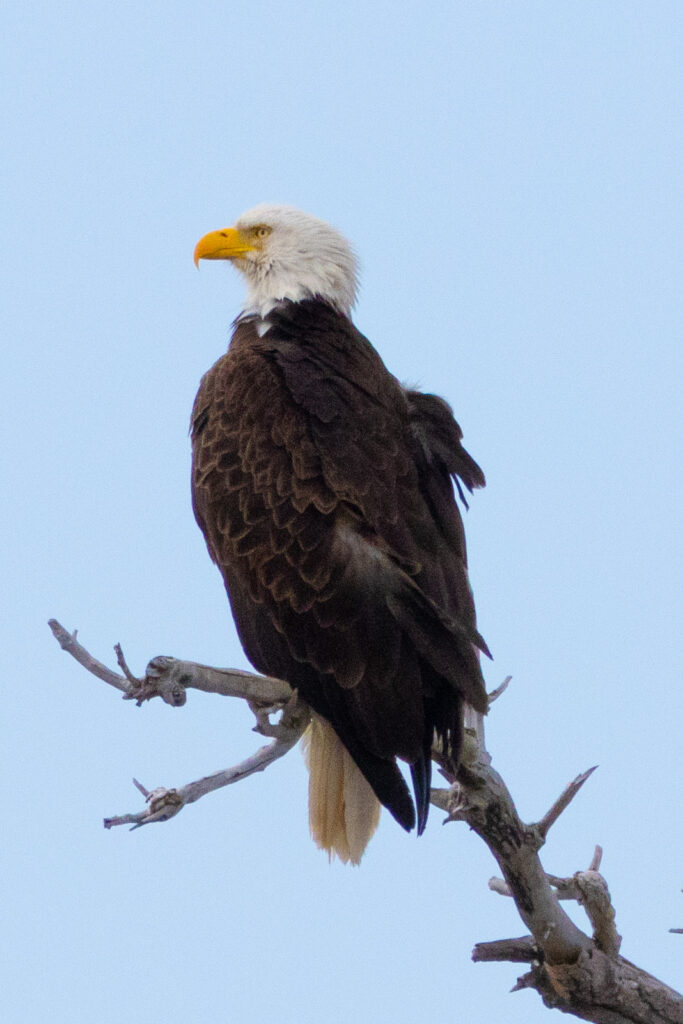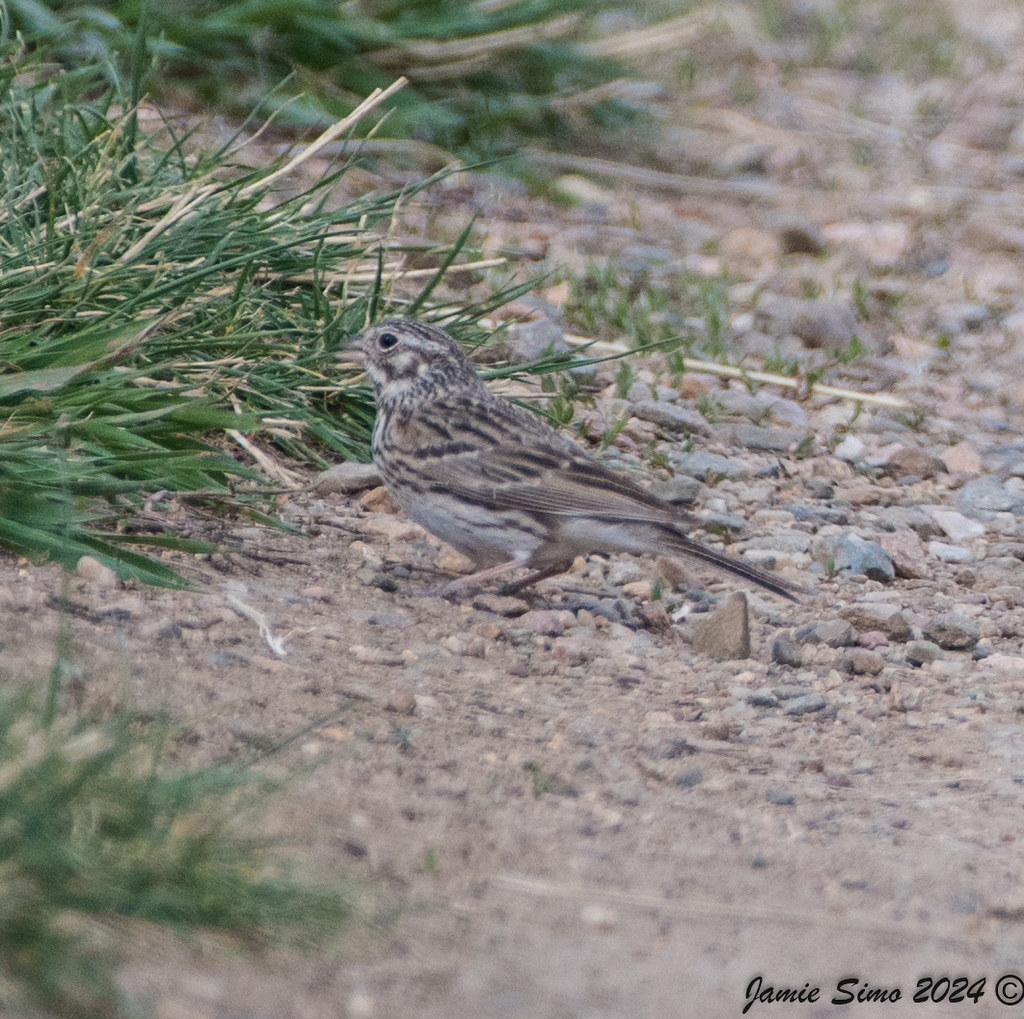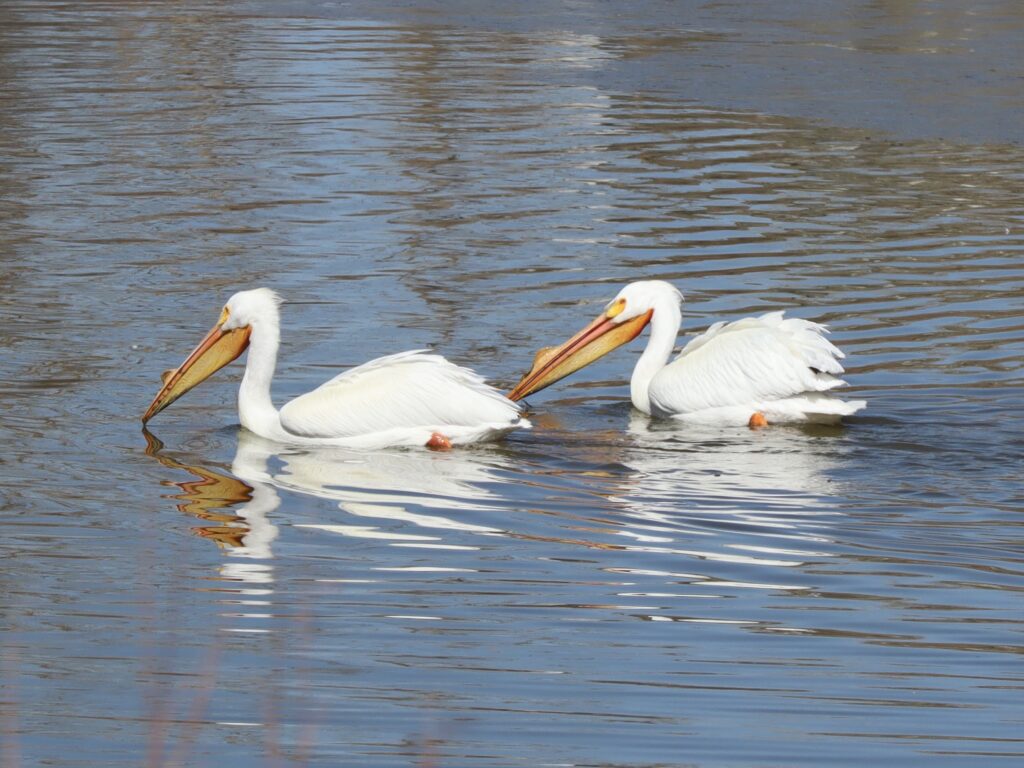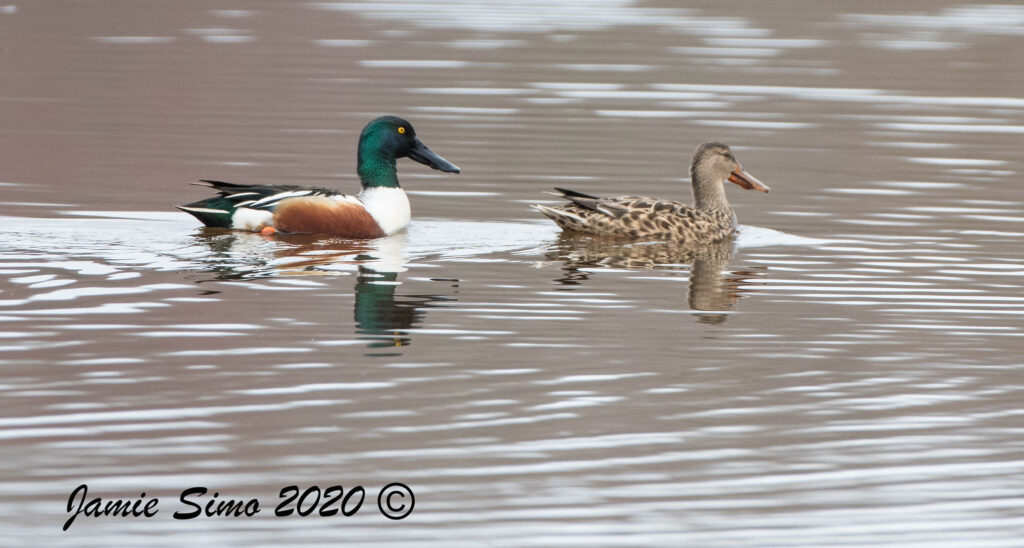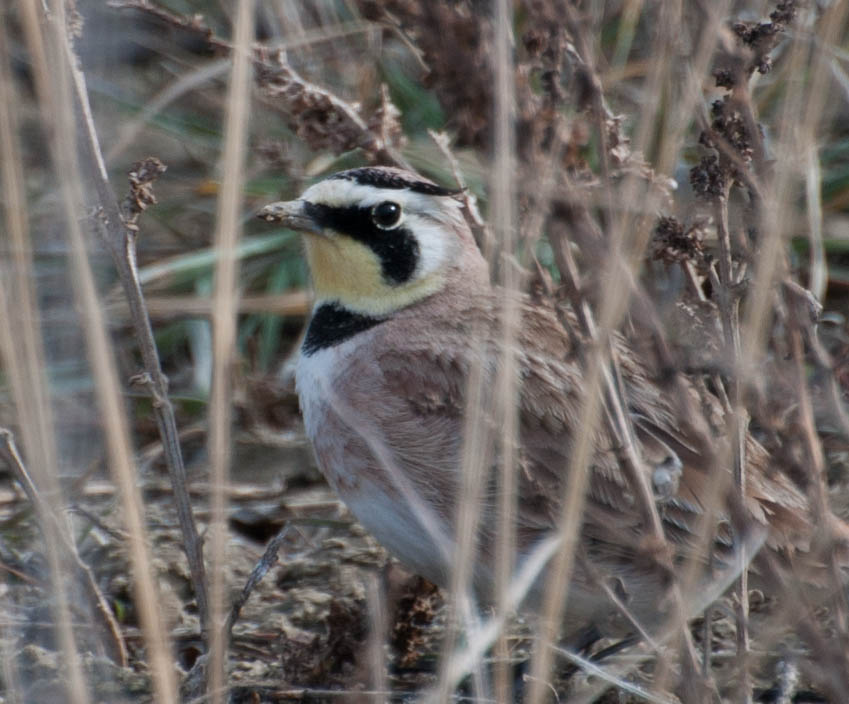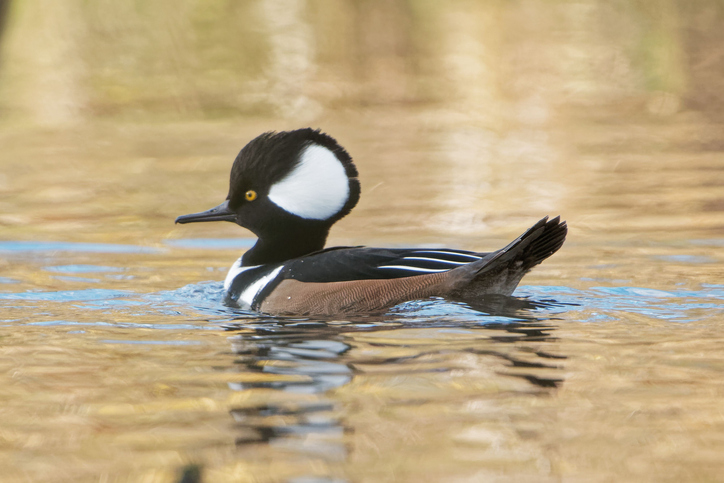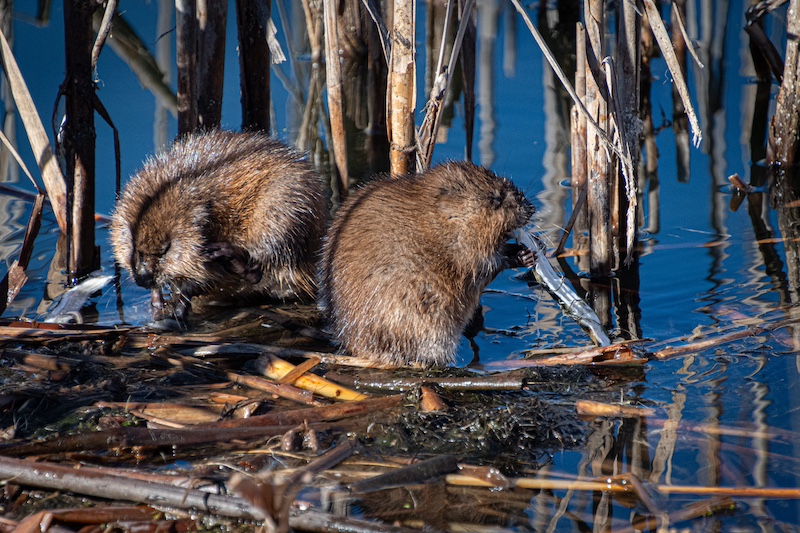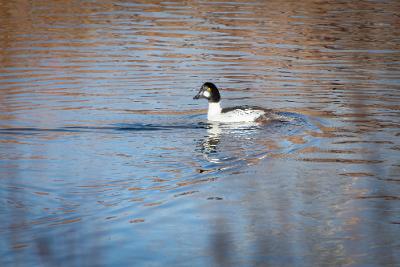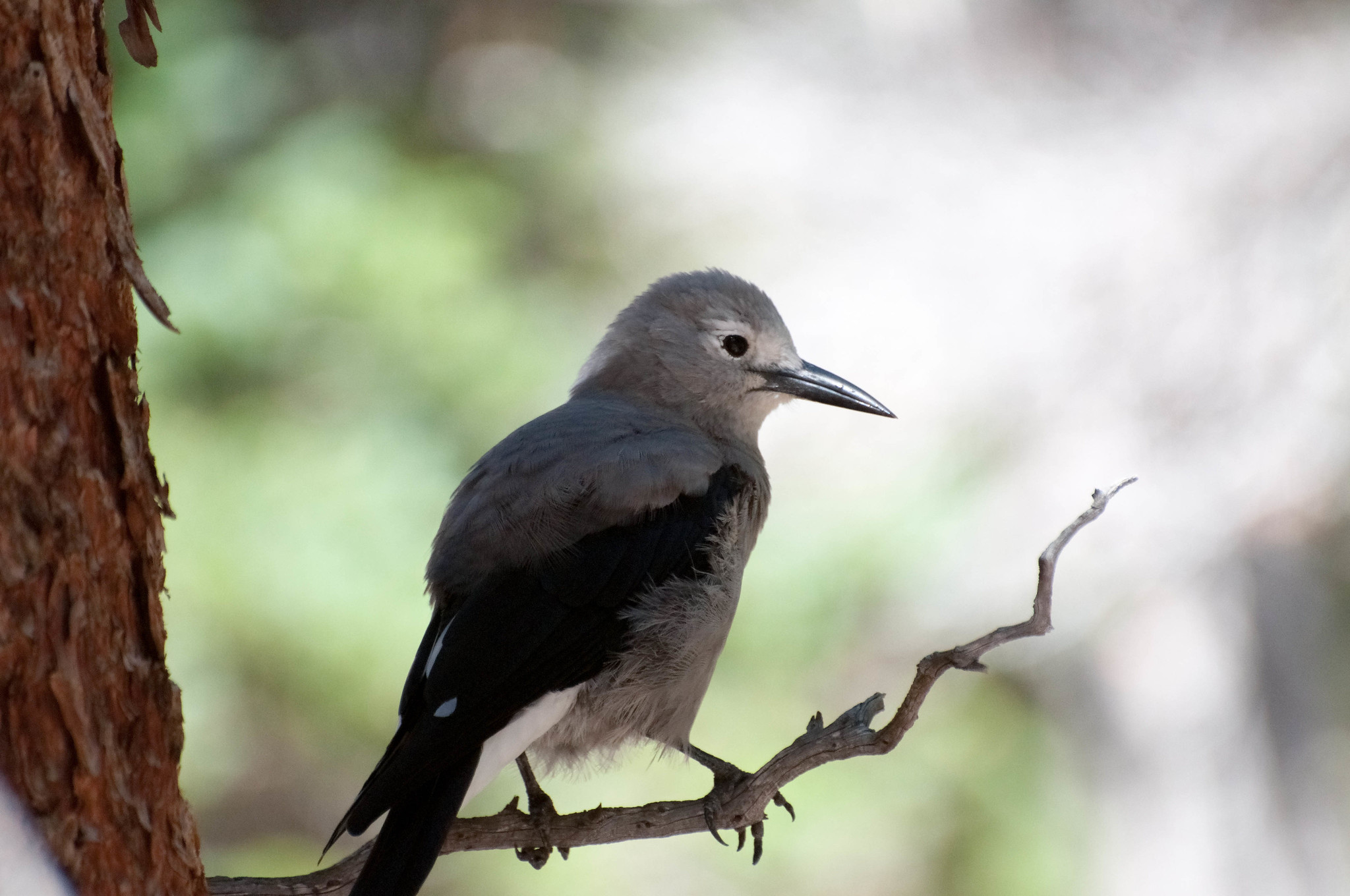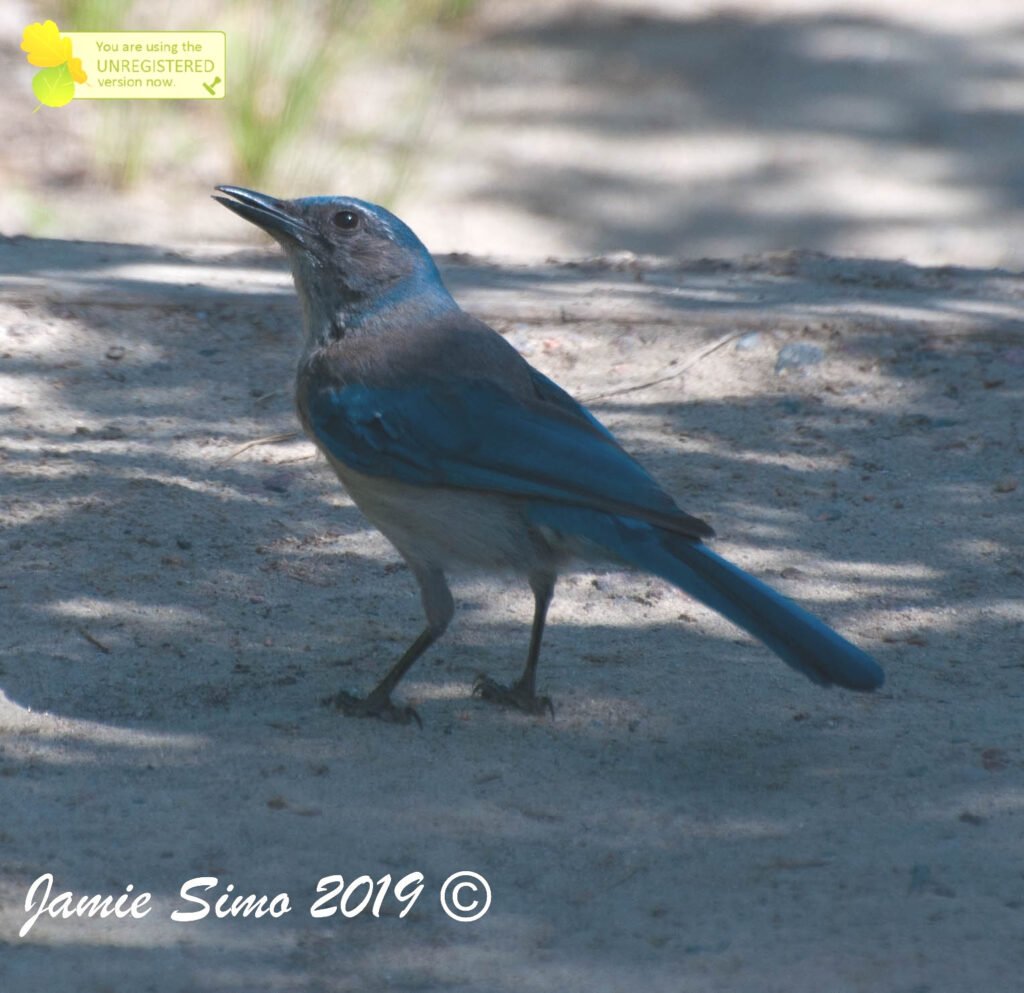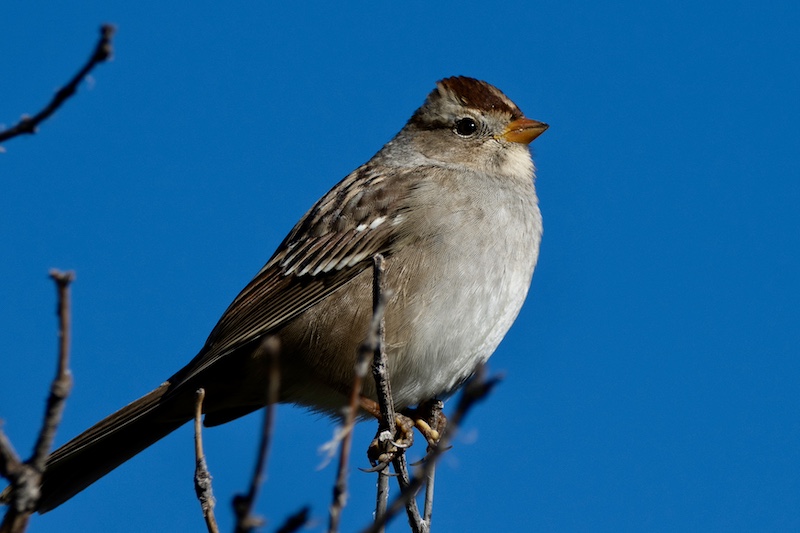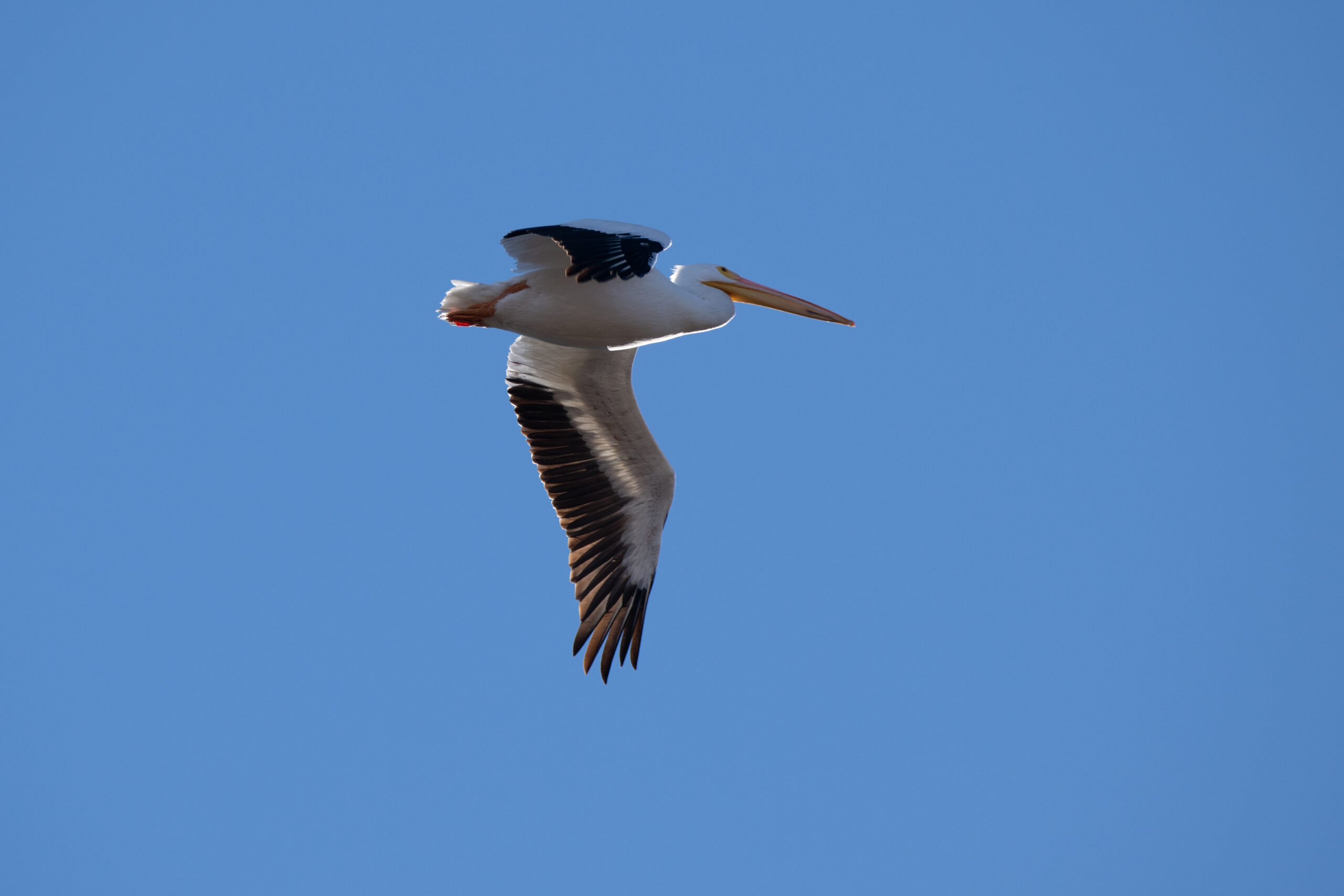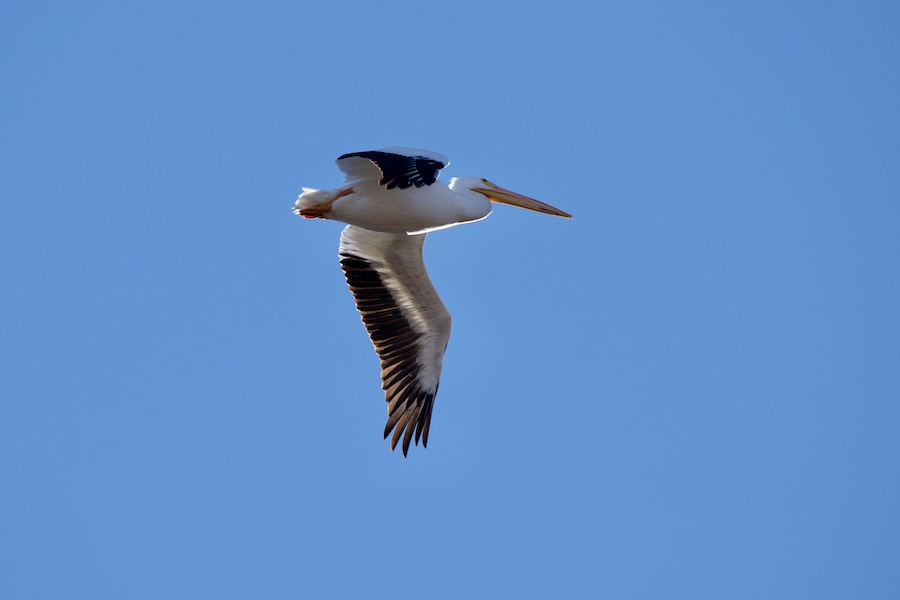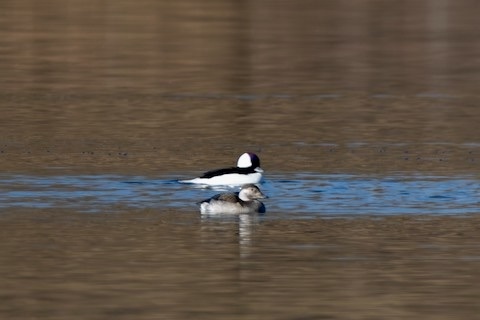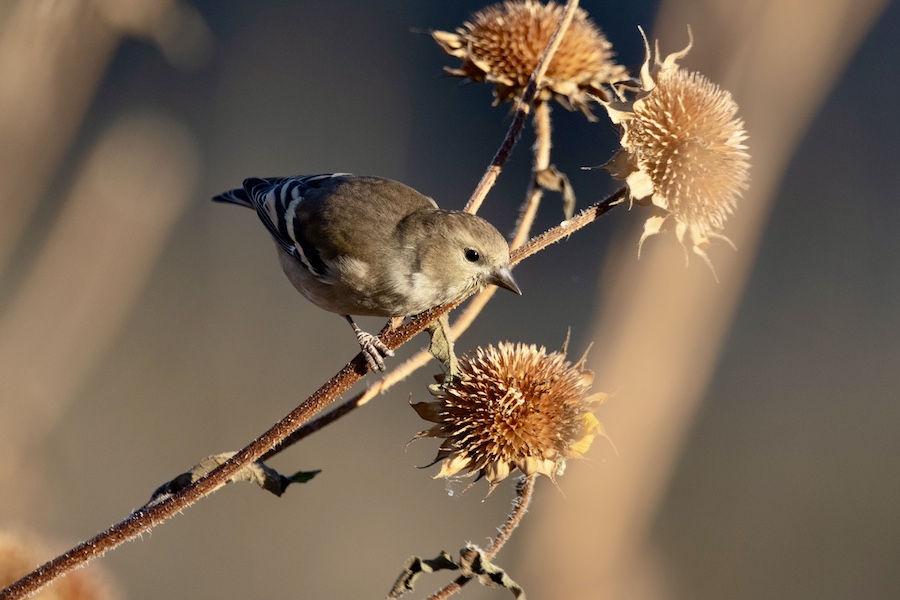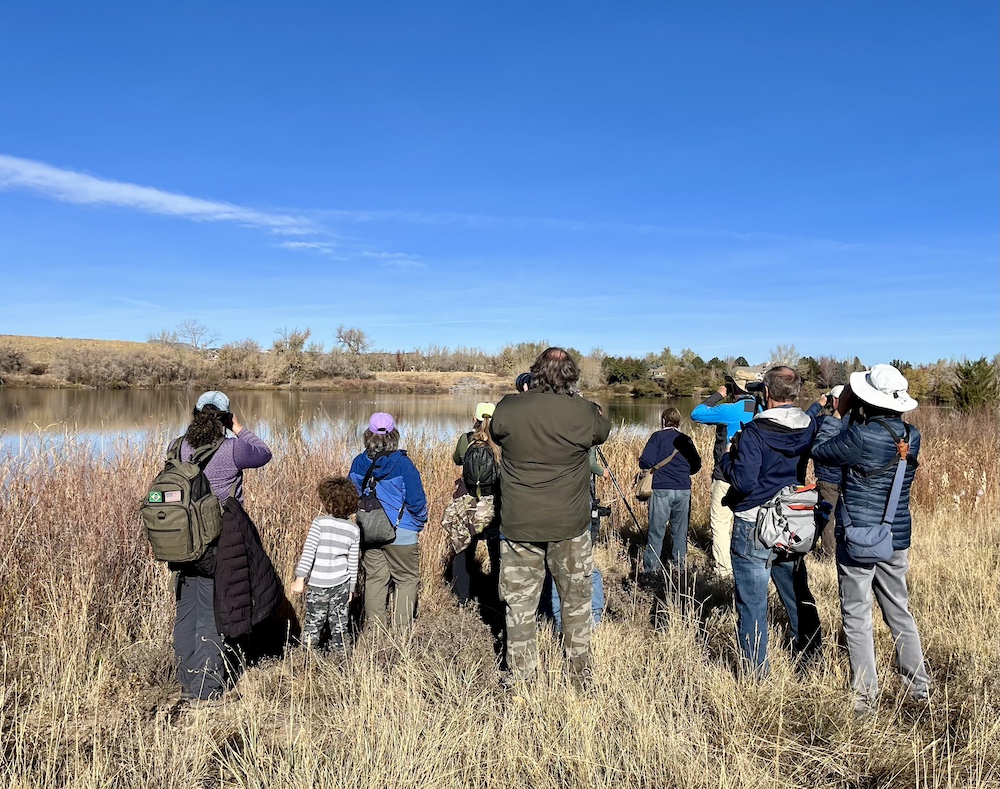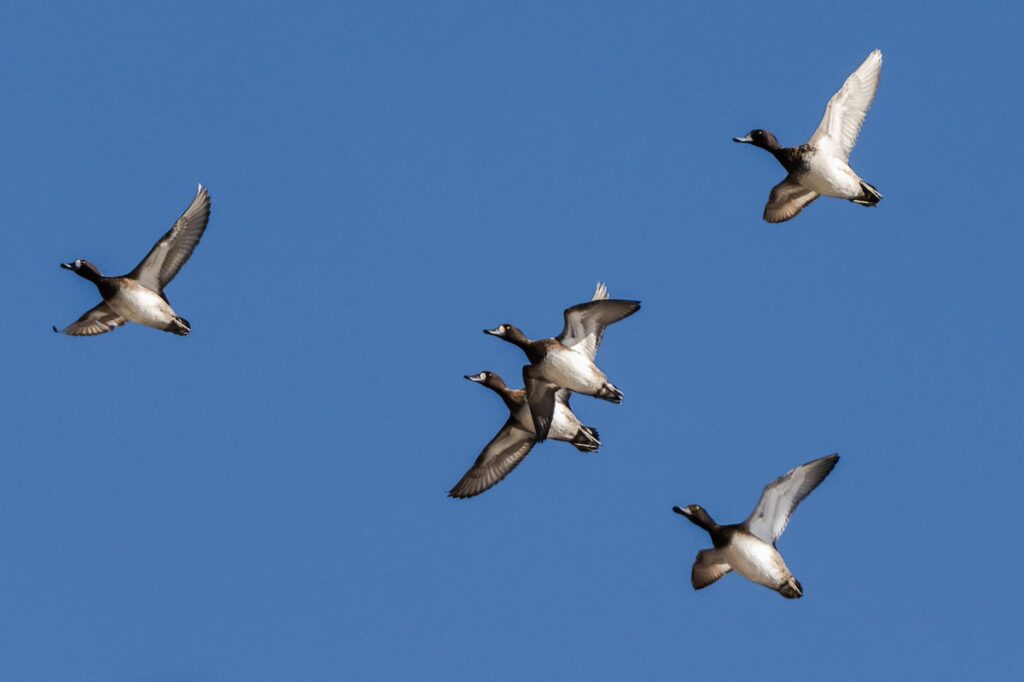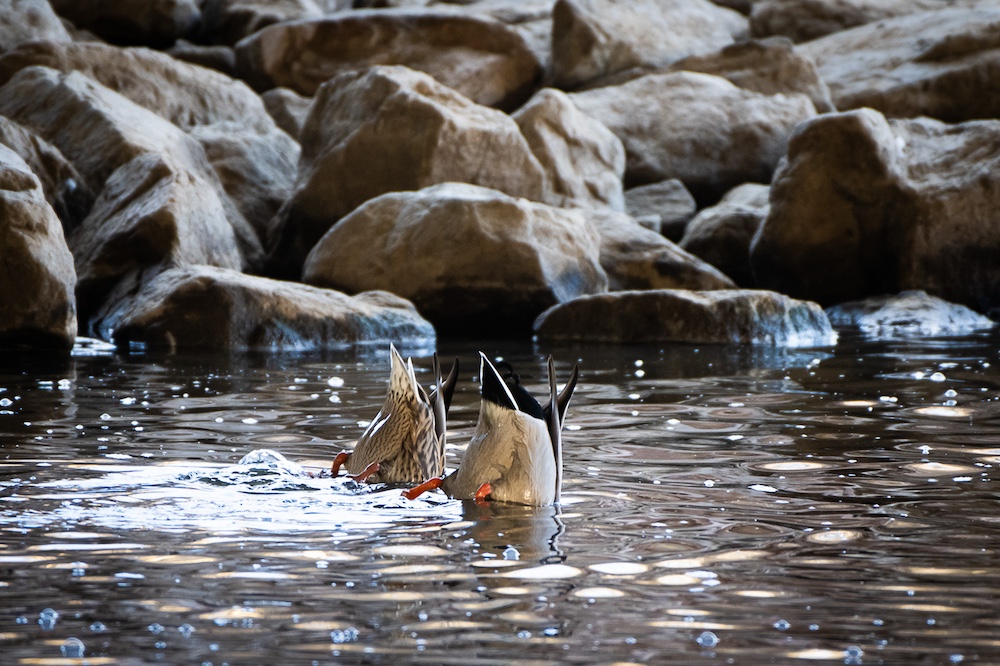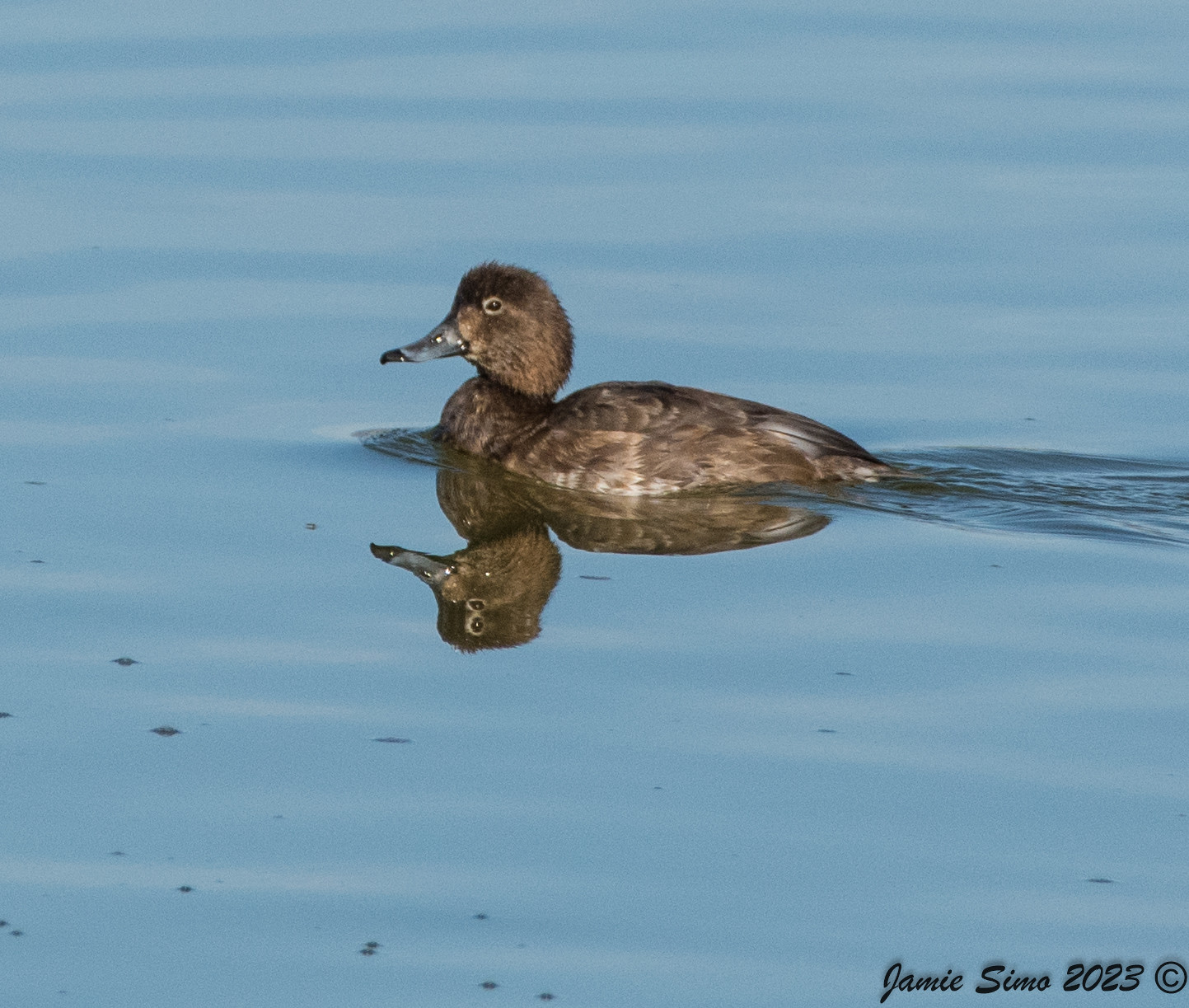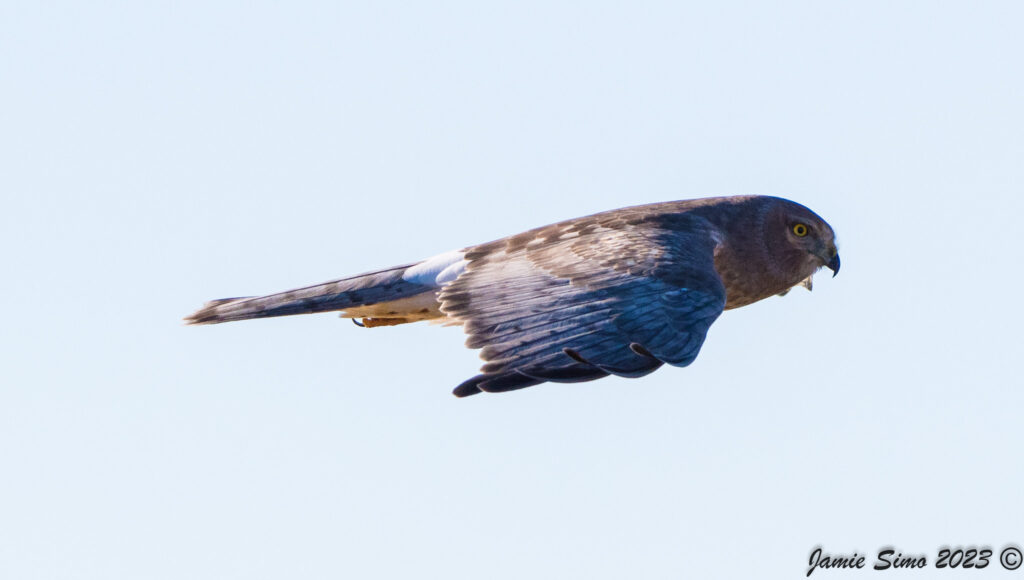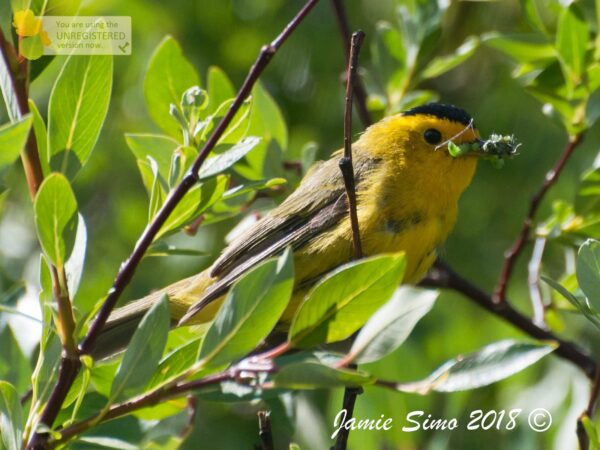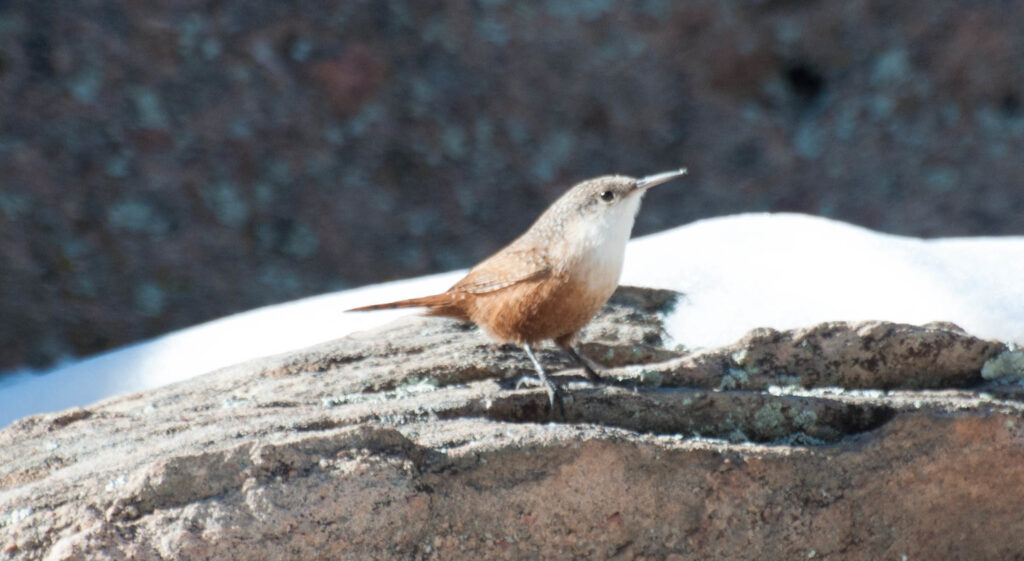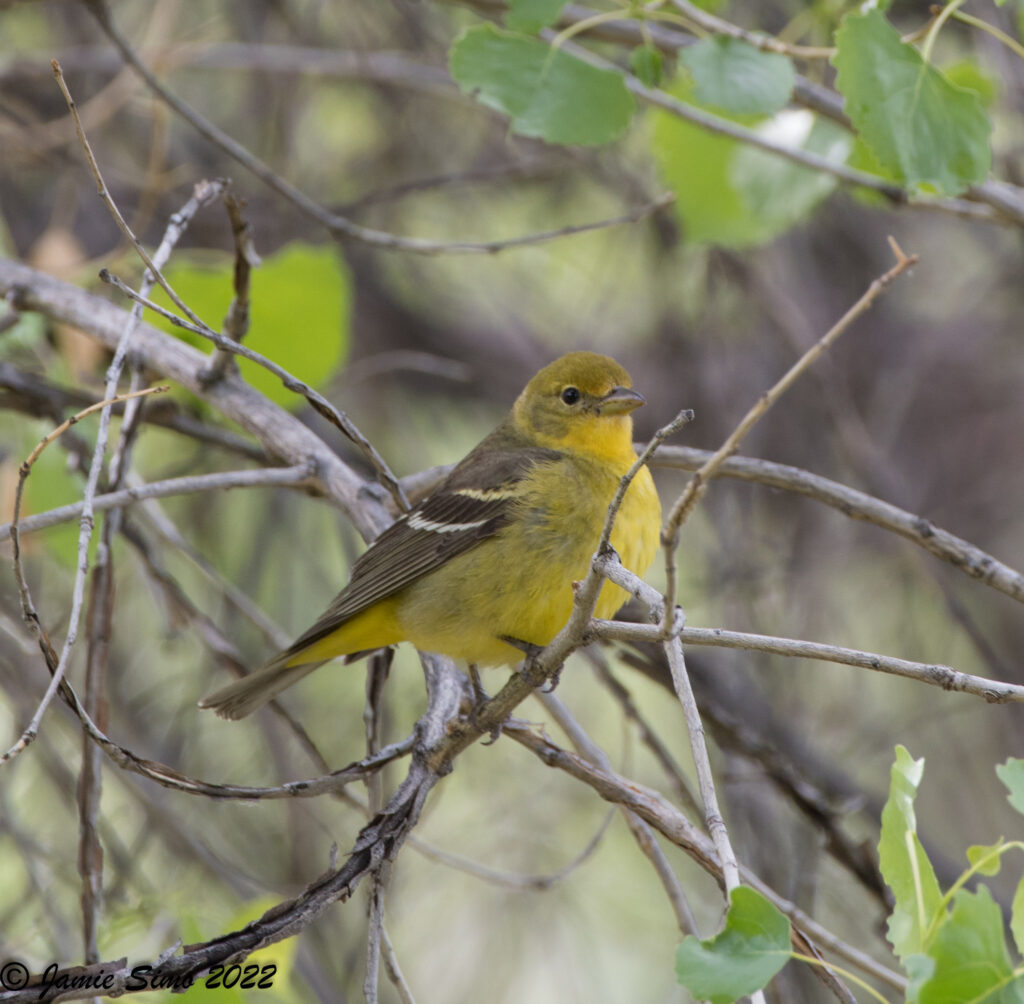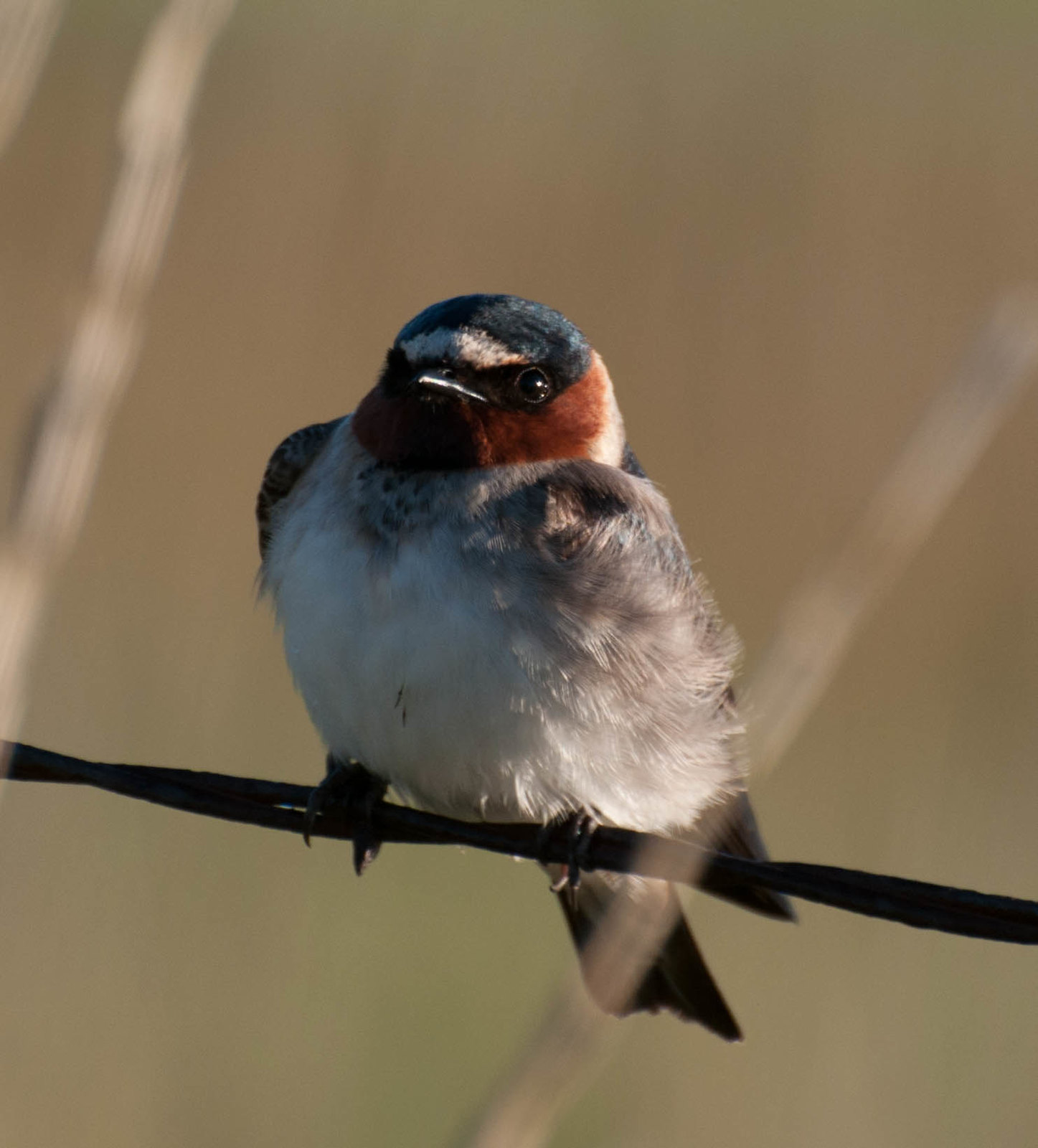
We couldn’t have had a better day this past Saturday for our trip to Stearn’s Lake! Stearn’s Lake is located within the Carolyn Holmberg Preserve at Rock Creek Farm, which is managed by Boulder County Parks and Open Space. The big draw at Stearn’s Lake is the presence of nesting Bald Eagles and we weren’t disappointed; both parents were in attendance and several of us were lucky enough to see a chick poking its head up occasionally. One walk participant aptly compared the chick’s behavior to whack-a-mole!
Bald Eagles lay between 1 and 3 eggs and generally nest in big, sturdy trees near water. While their main diet is usually fish, here in Colorado a major source of food is prairie dogs, so this nest is ideally situated with a prairie dog colony right next door. Because CPW recommends a buffer zone of 1/2 a mile away from Bald Eagle nests, we tried to keep moving along the trail where it fell within that buffer zone.
Breeding and nesting season is my favorite time of year and we had not only nesting Bald Eagles on our walk, but also a nesting Red-tailed Hawk and a Great Horned Owl with three branching owlets. It was really interesting to see the different nesting stages between the birds. Great Horned Owls tend to be one of the earliest nesters, often on eggs by Valentine’s Day with the chicks hatching out about 30 days after eggs are laid. The owlets will stay in the parents’ territory until October-ish when the parents begin courting again.
Bald Eagles typically begin laying eggs a little later than Great Horned Owls in March, while Red-tailed Hawks lay their eggs even later, usually in late March or April. A good rule of thumb is generally that the bigger the bird, the longer incubation and fledging takes so it’s advantageous, especially for predators, to nest earlier in the season so the chicks are ready to take advantage of the bounty of prey later in the season.
While the lake was too high for any shorebirds, we did get to see some water birds, including Lesser Scaup, Northern Shovelers, both Western and Pied-billed Grebes, Double-crested Cormorants, an American Coot, and one female Common Merganser. We also got to see a Belted Kingfisher hovering and diving for fish.
Probably the highlight of the walk was the first of season Vesper Sparrow we saw in the grass along the trail. Stearn’s Lake is a perfect place to see a Vesper Sparrow, which are grassland habitat specialists that construct their nests on the ground under other vegetation. This one didn’t have as prominent of a white eye ring as most Vesper Sparrows, but the rusty patch on the “shoulder” of the wing was a dead giveaway.
In total we had 26 species, including a first of season Cliff Swallow, not too shabby!
Stearns Lake, Boulder, Colorado, US
26 species
Canada Goose 2
Northern Shoveler 4
Lesser Scaup 2
Common Merganser 1
Pied-billed Grebe 1
Western Grebe 1
Rock Pigeon (Feral Pigeon) 3
Eurasian Collared-Dove 1
Mourning Dove 1
American Coot 1
Killdeer 1
Double-crested Cormorant 3
Great Blue Heron 1
Bald Eagle 2
Red-tailed Hawk 2
Great Horned Owl 4 3 owlets
Belted Kingfisher 1
Black-billed Magpie 4
Cliff Swallow 1 Small swallow, “headlight,” rusty and cream colors no forked tail
European Starling 7
American Robin 2
Vesper Sparrow 1 Small sparrow, rusty patch on shoulder, streaked breast, white eyering
Song Sparrow 1
Western Meadowlark 8
Red-winged Blackbird 20
Common Grackle 5


